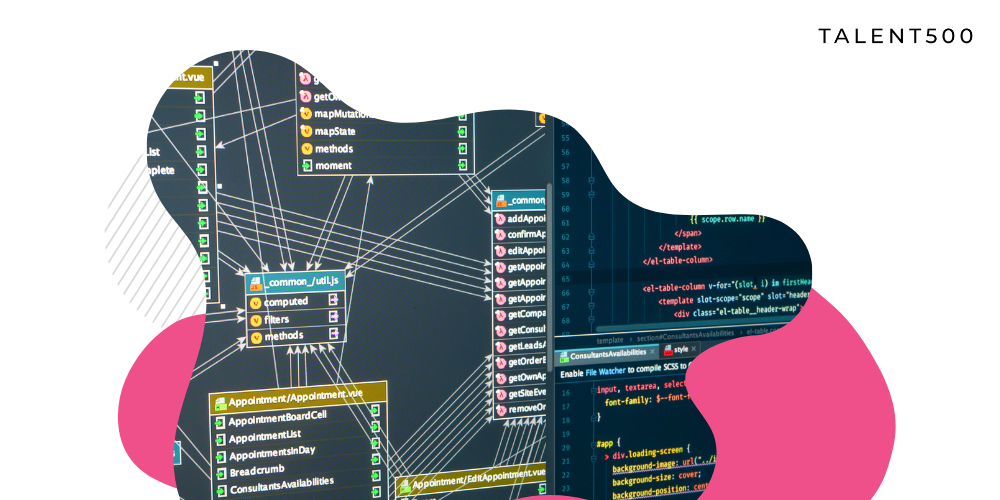Performance is a crucial aspect of any application. With billions of web applications on the Internet, the overall user experience, performance, and reliability make an application stand out. The web application you create must operate seamlessly to build trust among users. Backend developers are at the helm of building high-performance systems. But how do they determine that the backend infrastructure they are building will have high performance under peak conditions?
This is where performance metrics are used to understand the vital elements of a software system. Once an application is deployed in the production environment, it becomes critically important to measure its performance.
Here we explore the essential metrics associated with backend performance that must be optimized.
1. Latency
Latency is the time a data packet travels from one point on a network to another. It is an important performance metric that measures the responsiveness of a system. The ideal latency time for most web applications and websites must be less than 100ms. However, for large-scale multi-node software systems like maps and navigation services, it can be between 2 to 5 seconds.
Usually, performance testing is done to ensure that a system has the least latency possible, but optimizations can be done beforehand.
One of the best practices is reducing the number of server requests per page. Using cached files, optimizing HTTPS headers, and minimizing the use of JavaScript files can help. HTML5 WebSockets can be used to bypass HTTP calls. This will significantly reduce the latency due to too many HTTP requests.
2. Throughput
It measures the volume of traffic a web application can handle without breaking down. There is a direct correlation between latency and throughput. This is simply because when the throughput rises, the traffic increases, putting the server under high pressure, resulting in slower load times.
In performance testing, latency and throughput are concurrently measured to ensure that the system is optimized to perform without reaching the crisis point. The crisis point of a software system is determined by hardware configurations, network conditions, and software architecture.
By reducing the latency, the throughput is automatically optimized. Backend developers can optimize hardware configurations like RAM, Cache, and I/O per second to make the system faster.
3. CPU usage
It is a backend performance metric that is easiest to measure and optimize. CPU usage is simply the time service uses the CPU. Usually, it is calculated as a percentage and indicates the time service uses the CPU to complete its tasks.
There can be several reasons why a system has high CPU usage. If the backend developer uses too many dependencies in the code, several processes can run in the background even when not required. This hogs the CPU usage. Poorly coded functions can have high CPU requirements, such as erroneous for loops. Systems under malware attacks can witness high CPU usage as well.
Backend developers must adequately plan the background processes when designing a system. Giving priority to only critical processes running in the background saves CPU cycles. Installing malware protection is also essential. Restarting the server in emergencies like system failure can help kill most unnecessary procedures.
4. Server uptime
Server uptime is the duration of time the server is up and running, providing the desired service to the end-user. In performance testing, the server uptime is calculated as:
Server uptime = (Amount of time the server is running enabling service in real-time / The total amount of time uptime expected under ideal conditions) x 100
While primarily the server uptime depends on the hardware and the operating system, the software also contributes. While deploying a system, back-end engineers must ensure that the server has high-quality hardware that will not fail under high-pressure conditions. A poorly designed system architecture can have a devastating effect on server uptime. A well-known incident was when NASA was hacked due to system architecture issues, and the servers had to be shut down for 21 days to limit the risk and evaluate the extent of the attack.
Backend performance is not just about optimizing for speed but also ensuring security. Some steps back-end developers can take are regular software updates, building a robust architecture, and limiting the use of untested third-party open source libraries and plugins in the application.
5. Memory
Memory allocation is another essential metric that affects backend performance. Different languages allocate memory differently. Before you deploy a system in the production environment, you must evaluate its memory requirements.
Backend developers must know how the language used for system design allocates and cleans up memory. This is essential for designing systems to scale from a technical and a financial perspective. High memory servers are expensive, and it is necessary to plan memory allocation for a viable application.
For instance, Ruby hangs on to the allocated memory even when it does not require it at a given moment; this can be a significant issue for applications with high traffic. For such applications, Java or Python is a better-suited programming language.
Conclusion
The adage “what can be measured, can be improved” is essential in backend performance. We hope you will consider these five critical metrics when performance testing your application before deploying it in the production environment.
Talent500 helps back-end engineers find opportunities with some of the best global employers. Join our elite pool of back-end developers and start a truly satisfying career.




